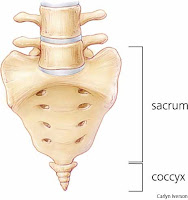The athletic women who may be recreational, competitive, collegiate or pro, has her own set of complications when returning to activity. Decreased income from not being able to compete adds extra stress to the postpartum period. The recreational athlete may feel frustrated about her body and how long it will take to get “back into shape”. The athletic woman may have increased mental frustration in waiting for her body to heal so she can return to her previous exercise training.
Regardless of the previous activity level before pregnancy, returning to some form of activity is very important postpartum. A physical therapist specialized in women’s health can in many ways help overcome the challenges with initiating or returning to an exercise program. One study concluded that “a physical therapy exercise and health education program is effective in improving postnatal well-being” and “may reduce longer-term problems such as postnatal depression”.
Some things to consider before starting or resuming an exercise program postpartum: Give yourself at least 2 – 3 months to allow tissues to heal and develop a routine for you and your family. See your primary care physician and ask if it is okay to start or resume your activity. After 2 – 3 months, do not attempt to resume the activity you were doing pre-pregnancy; cut the routine by half and start with 2 to 3 days a week to see how your body fatigues under the new stresses of motherhood. Feel free at any time to contact your women’s health physical therapist to answer questions and assist in returning you to your healthy, active lifestyle.
http://www.womenshealthapta.org/find-a-physical-therapist/index.cfm
http://www.womenshealthapta.org/find-a-physical-therapist/index.cfm
http://www.blackcelebkids.com/wp-content/uploads/2009/03/candanceespencover.jpg Accessed by Cheryl Lynn Rudd. November 30, 2011.
http://candaceparker.com/ Accessed by Cheryl Lynn Rudd. November 30, 2011.
http://www.articlesbase.com/basketball-articles/wnba-candace-parker-returns-to-wnba-after-pregnancy-1028822.html Accessed by Cheryl Lynn Rudd. November 30, 2011.
Special Topics in Pregnancy and Postpartum.Chicago , Illinois Chicago
http://candaceparker.com/ Accessed by Cheryl Lynn Rudd. November 30, 2011.
http://www.articlesbase.com/basketball-articles/wnba-candace-parker-returns-to-wnba-after-pregnancy-1028822.html Accessed by Cheryl Lynn Rudd. November 30, 2011.
Special Topics in Pregnancy and Postpartum.
Norman E, Margaret S, Richard HO, Galea M. An Exercise and Education Program Improves Well-Being of New Mothers: A Randomized Controlled Trial. Phys Ther. 2010;90:348-355.

